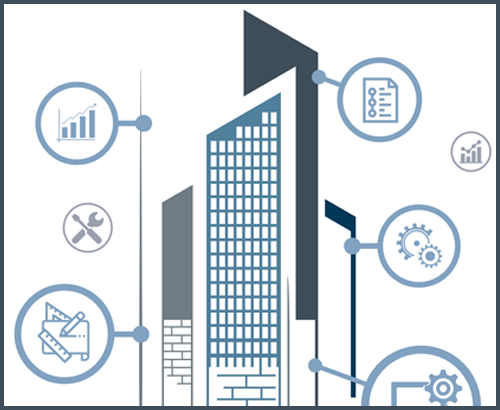Anything But Typical: Managing Subcontractor Default Risk in Today’s Environment

As the pandemic continues to disrupt supply chains and cause inflationary pressure on the engineering and construction (E&C) industry, we talk to four large subcontractor default insurance carriers about the events of the last two years, key trends and what’s next in 2022.
Subcontractor default insurance (SDI) has continued to gain traction over the last decade as an effective tool for general constractors managing the risk of default. And while the last couple of years have been unique in many ways, they’ve also resulted in many new users and increased adoption and utilization as contractors continue to evolve their approach to managing risk.
During the early days of the COVID-19 pandemic, many were concerned about the potential increase in claims due to subcontractor defaults. As shutdowns loomed, those in E&C worried that a prolonged downturn, much like that of 2008, would occur. Yet, for many contractors, 2021 brought robust or steady construction activity and better outcomes than initially expected after 2020.
Despite the positive momentum, the industry continues to grapple with issues such as labor shortages and supply chain disruptions. Adding to these challenges are high inflation, indications that central banks are planning to increase rates soon, and implications that real construction activity may suffer.
These indicators have many concerned that the economy is weakening and prospects for projects in 2022 are looking increasingly uncertain. Many of these challenges or costs are often pushed down to subcontractors, who may not be equipped to absorb higher costs or solve labor shortages.
As these issues begin to play out and the potential for defaults climbs, many in the SDI industry are carefully watching economic indicators and monitoring projects for issues. The good news is that, so far, the COVID-19 pandemic has not yielded the same level of defaults as after the 2008 housing market collapse. Many general contractors, carriers, subcontractors and others across the industry also moved quickly to mitigate the effect on their risk profiles, helping reduce potential impacts.
Yet, the industry remains watchful of the current economics. For this article, FMI interviewed executives at four top SDI carriers about lessons learned from the last two years, the state of SDI and risk profiles, and discussed how they’re helping clients navigate the current operating environment.
We’d like to express our gratitude for the generous time and candid answers from those interviewed from Cove Programs, Hudson Insurance Group, Liberty Mutual and AXA XL. We’re excited to share their insights into the SDI market and how they’re thinking about moving forward in 2022 in this first of two articles.
Not Your Typical Economic Upheaval
Conventional wisdom holds that as the economy falters, the number of subcontractor failures increases. But this time is different.
Despite the pandemic’s persistency and the continued emergence of new coronavirus variants, the bright spot of 2021 was clear: The worldwide crisis did not look anything like the Great Recession. A period where general constractors and subcontractors dealt with years of declining opportunities and sales, and then spent the following years making up for the losses, the 2008 recession left many insurance companies dubious about the future and how to think about risk.
But many of the direst predictions for the aftermath of the coronavirus pandemic didn’t occur. Many contractors and subcontractors picked up work, were able to complete projects (although often on altered timelines), and continue to book business for 2022.
“We haven’t seen a significant upward trend in claims, even in surety (i.e., the firm responsible for paying off the debt in case the debtor policy defaults or can’t make the payments),” said Douglas Schrift, chief underwriting officer at Liberty. “It’s been relatively stable.”
Another difference is that margins seemed to have remained healthy despite the increase in labor and materials costs as well as the uncertainty about jobs starting or completing.
“We’re comfortable with the level of risk we’re bringing onto our books,” said Schrift, who reflects on how before 2008 subcontractors were chasing work with cutthroat margins and undercutting each other. “I haven’t seen that this time; the subcontractors appear to be doing well with margins,” Schrift pointed out. “And I don’t think the pandemic necessarily disrupted that in a meaningful way. That said, many general contractors and subcontractors got past short-term losses with the government providing two rounds of PPP (Paycheck Protection Program) and Employee Retention Credits. Now that these are over and the labor and material disruption continues with the omicron variant, there could be trouble for firms that must rely more on internal resources to support problem projects.”
Cautiously Optimistic
While there hasn’t been an uptick in subcontractor default activity because of the pandemic, Cove has seen a slight increase in the cost of claims over the last 12 months that appears to correlate with material price inflation, strong backlogs of replacement subs and an increase in project sizes.
“We’re still cautiously optimistic about the next couple of years,” said Nathan Espe, executive vice president and head of SDI at Cove. The fact that construction was deemed essential in most markets and with just a few exceptions helped shield the industry from some of the negative pandemic impacts felt across other sectors, like restaurant, travel and hospitality.
“General contractors and subcontractors kept working, for the most part, with increased health and safety regulations in place,” said Espe. “By and large, activity [has] continued fairly well through the pandemic.”
He said the federal stimulus programs also provided support throughout the uncertainty. “Balance sheets across the industry right now are healthy, if not healthier than they were going into the pandemic,” Espe added. “We’re watching closely, but in terms of default activity related purely to economic recession, we’re not seeing that.”
That doesn’t mean there aren’t any headwinds. Ongoing supply chain disruptions, port congestion, labor shortages and other constraints continue to take a toll on many different industry segments. Construction hasn’t been immune to these impacts.
Managing Supply Chain Snarls
Many of those interviewed are, however, looking more carefully at issues like supply chain risk and how contractors are mitigating and managing their exposures to that risk. Across the providers, they’re working with insureds to make sure they have appropriate strategies in place to understand sector-specific risk and other variables that might impact their businesses.
With no immediate end in sight to the ongoing, pandemic-driven supply chain disruption, some contractors are getting creative about how they procure, store and utilize the materials they need for their projects.
Approaches like buying in bulk, creating earlier and more accurate forecasts (and then sharing them with suppliers), avoiding last-minute ordering, and storing materials off-site for future use are all helping companies ride out the storm.
“Contractors are identifying long lead-time or problem materials early, coming up with substitutes and using value engineering to work around these issues,” said Mike Oliveri, SDI risk engineer at Liberty. “Smart general contractors are honing in on this, having the conversations with owners and tackling the issues early.”
Others are bringing subcontractors onboard earlier or procuring materials directly. “These seem to be the most consistent and simplest approaches in addressing the issue,” Oliveri added.
Carriers are now working closely with clients to accurately manage some of these new issues.
“We want to see a solid backbone of practices, including a disciplined business plan and processes and procedures that have evolved and continue to evolve with emerging risks,” says Cheri Hanes, SDI risk engineering team leader at AXA XL. “The target may move, but the skills it takes to keep hitting it stay the same, basically. Builders need to be diligent in maintaining a proactive approach to dealing with whatever the market serves up next.”
Encouraging the Right Behaviors
At Hudson, Risk Manager William Lane and Senior Vice President Wallace Moreman say they’ve seen more insureds using escalation clauses within their contracts, knowing that they’re operating in an environment where material costs continue to increase.
They’re also purchasing job materials as soon as possible, knowing that a five-week lead time on electrical switches can literally turn into a 10-week lead time overnight. Then, they’re storing those goods on-site or off-site to ensure that the materials are available when the contractor needs them.
“This has added a little bit of cost to the job, but at least they know they’ll have the availability of the product when they need it,” said Moreman. “We’re always trying to educate ourselves and consider how we can help improve the overall industry. Encouraging the right behaviors is always a good thing.”
Espe at Cove agrees that supply chain issues are top of mind for everyone in the industry. “We’re looking for an open, fair, honest and collaborative approach among owners, builders and subcontractors to make sure they’re not pushing untenable risk down to subs who can’t manage it. You’re not going to solve that issue by forcing risks down to the least common denominator.”
What’s the Outlook?
Hudson’s Lane expects that in 2022 the balance sheets of many subcontractors will begin to resemble levels seen before the pandemic. “I think we’ll see some finance behavior in the year ahead that will create some risk,” said Lane. “Some subcontractors will take that money off their balance sheets, and that will change the picture of their business’s health.”
The conditions that are creating the current supply chain challenges, combined with the related materials cost escalation, will remain top of mind in 2022, according to Hanes of AXA XL. She sees the cultivation of collaborative subcontractor and supplier relationships as more important than ever and said the current climate necessitates increased communication among those stakeholders.
Through educational outreach with project owners, designers, engineers and other entities, general contractors can collaboratively mitigate or even avoid the potential impacts altogether. For example, the ongoing cost escalations can’t just be an inconvenience that gets pushed down to the subcontractor; they must be addressed collaboratively with other project stakeholders.
Speaking to general contractors, Hanes of AXA XL said part of mitigating project risks means understanding subcontractors’ strengths and weaknesses. Put simply, expecting them to jump in and successfully handle tasks outside of their core scopes, market sectors or geographies can be a recipe for failure.
“I just went to a job site where the subcontractors, who had performed well in one market, followed a builder to another market 3.5 hours away and now they are facing a very large default,” she said. “It was a shift the subs should not have made; they weren’t prepared for it. It’s incumbent on builders to understand this type of risk, which is inherent in the current shifting construction market.”
Each of the carriers emphasized the importance of strong relationships and regular communication with subcontractors, especially in the project pursuit phase, to allow all parties a chance to collaborate in identifying challenges and risks as early as possible. Doing so allows for proper mitigation plans to be put into place and provides the opportunity for strategic and collaborative management of risks.



BLOG_TN_500x410.png)